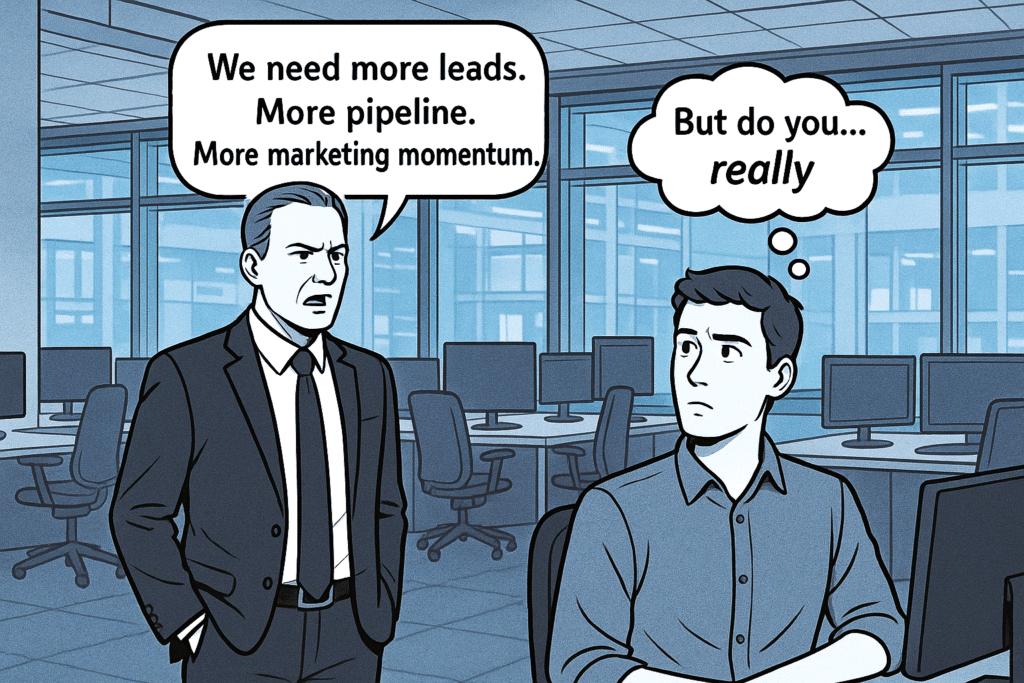Your brand is important. In an always-on, digital world, it is most likely the first thing your customers, investors, and colleagues will interact with. Many businesses look at brand in isolation but rarely tie it into resilience and forward planning.
In today\’s rapidly changing digital world, business resilience is essential for C-suite leaders. Companies that can anticipate and respond to changes in the market, technological advances, customer requirements, and other factors will be better equipped to cope with any potential difficulties.
To ensure that your organisation can successfully manage any potential disruptions, it is important to create a comprehensive strategy based on SWOT analysis and risk assessment. In this blog post, we will discuss how CEOs and C-suite executives can create a roadmap to business resilience through strategic marketing planning.
Business resilience is the ability of a company to maintain operations through any disruptions or challenges. It involves implementing strategies and processes to identify potential threats, and vulnerabilities, and develop strategies for mitigating them.
Objectives
The goal is to ensure that the organisation can keep functioning and remain competitive even in the face of unexpected events.
To do this, it is essential for C-suite leaders to have a comprehensive understanding of the various risks their organisation may face.
The first step in developing a business resilience plan is conducting a risk assessment.
This helps organisations identify potential threats and vulnerabilities, as well as develop strategies for mitigating them.
Risk assessment
A comprehensive risk assessment should involve all company areas, from technology to operations to people management.
Once identified, these risks can be mitigated by implementing appropriate technological solutions, operational policies and procedures, or other measures depending on the nature of the risk.
Once potential risks have been identified, CEOs and C-suite executives can begin developing an effective business resilience plan. This plan should consider both short-term and long-term goals, as well as provide detailed steps on how to achieve them.
Business resilience planning
The plan should also include measures for monitoring progress and responding quickly when necessary. A key element here is investing in the right tools and technologies that will enable your organisation to respond quickly when faced with unexpected events or challenges.
Technologies such as data analytics, cloud computing, artificial intelligence (AI), and machine learning (ML) can help organisations analyse data more effectively and make better decisions in times of crisis or disruption.
It is also imperative for C-suite leaders to manage change within their organisations effectively so that they can adapt quickly when needed.
CX & Customer Experience
Changes like new products/services or customer experience initiatives should be carefully planned out so they are not disruptive but instead lead to positive outcomes that further enhance the organisation\’s ability to respond quickly when faced with unexpected events or challenges.
Working Directly with the C-suite
Additionally, it is important for C-suite leaders to ensure that they are setting an example by leading with resiliency initiatives within their own teams – such as encouraging experimentation with new ideas or giving team members flexibility in their roles – so that this mindset becomes embedded throughout the organisation culture as a whole.
Ultimately, business resilience requires CEOs and C-Suite leaders to take an active role in developing plans that will enable their organisations to react appropriately when faced with potential disruptions or difficulties further down the line.
By assessing risks accurately and investing in appropriate tools & technologies, along with creating an environment where employees feel comfortable taking risks & experimenting with new ideas; organisations will be better prepared for whatever comes their way – thus creating a roadmap towards true business resilience success!
3 Ways How Digital Clarity can help?
As a company with over 20 years of experience and a team of seasoned business professionals, our company has seen it all. Our hands-on approach is well known as is our black book of partners and professionals.
Here are just 3 of countless ways that Digital Clarity can help the CEO with brand marketing and business resilience by providing the following services:
Diagnosing the challenge
Without understanding the symptoms, you can never find a cure. Ironically, many businesses don\’t go through this process and wonder why they keep achieving the same mediocre results.
Below are just some of the areas we would go through at the first stages of a Diagnosis Workshop
- Identify the challenge: Start by clearly defining the challenge and understanding the root cause.
- Gather data: Collect data from internal and external sources to gain a better understanding of the challenge.
- Analyze the data: Analyze the data to identify patterns and trends that may be contributing to the challenge.
- Develop solutions: Brainstorm potential solutions and evaluate their feasibility.
- Implement solutions: Implement the most promising solutions.
Create a Digital Strategy:
Digital Clarity can help the CEO develop a comprehensive digital strategy that will help the company build a strong online presence and reach its target audience. This strategy will include the development of a website, social media accounts, and other digital marketing channels.
Bringing it all together:
Digital Clarity can help the CEOs and their various departments create and help execute a tailored to the company growth programme.
To learn more about how we can help you. Please contact. Reggie James at info@


